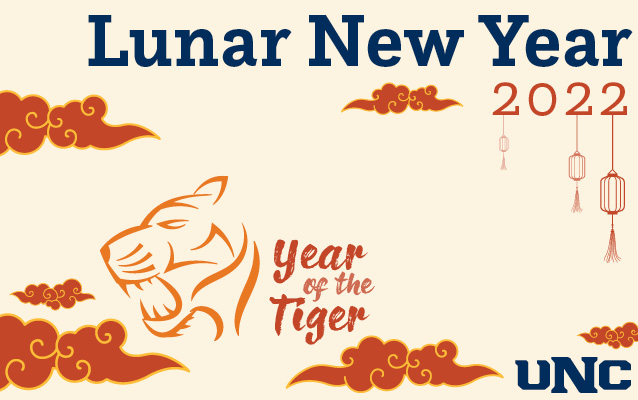The Chinese New Year 2022 begins on Tuesday, February 1 and is celebrated for 15 days culminating with the Lantern Festival on February 15. According to the Chinese Zodiac, 2022 represents the Year of the Tiger and it is believed that persons born in this Zodiac are thought to be extremely competitive, courageous, and ambitious.
In Chinese tradition, the origin of the Lunar New Year is derived from many beliefs. One of the most imaginative is the legend of Nian, a beast believed to arise just before the end of each lunar year and believed to devour livestock, crops, and villagers. The villagers discovered that the creature was afraid of the color red, loud noises, and bright lights. Therefore, red lanterns and scrolls hang from homes along with the use of candles or fireworks to protect from Nian every year.
Due to migration across the world, Lunar New Year has taken on many traditions for Asian and Pacific Islander communities. For example, some may clean their homes to get rid of bad spirits while others may eat certain foods such as yuan xiao which symbolizes family unity, happiness, and completeness. Parents and elders gift children with red envelopes, called hóng bāos in Mandarin or lai see in Cantonese, which offers the hope of luck and prosperity in the new year. Elders also receive red envelopes from the younger generation as a blessing of longevity and a show of gratitude. These traditions underscore collectivist values of connecting with family and community to find better fortunes for the new year.
Take Action:
- Asian Pacific American Student Services (APASS) Lunar New Year Celebration will include
a Children’s Carnival, Dim Sum Buffet, and a Lion Dance performance
- Saturday, February 12, 12:30pm at Campus Commons Multi-Purpose Room
- Register here
- Explore Chinese art, history, and culture in the classroom through Teaching China with the Smithsonian.
- Be mindful of how to pronounce names that may not come naturally to you. Links embedded in this section serve as tools you can use to address people by their accurate name pronunciation and thereby promoting a sense of belonging and inclusion for all.
- Join the Smithsonian American Art Museum for their virtual Lunar Year Celebration.
- Attach the Lunar New Year design elements to your email signature and/or use it in your social media
For additional education and personal development related to diversity, equity and inclusion, the following resources are available: DEI Education and Resources, DEI & Antiracism Resources from the UNC Libraries, the Education Equity Toolkit from the Colorado Department of Higher Education, and the UNITE workshops for faculty, staff, and students.


